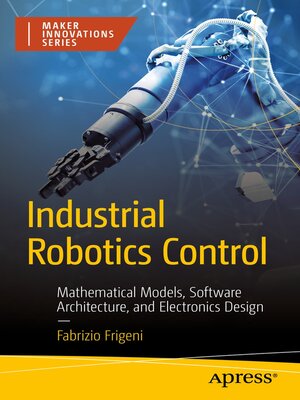Industrial Robotics Control
ebook ∣ Mathematical Models, Software Architecture, and Electronics Design · Maker Innovations
By Fabrizio Frigeni

Sign up to save your library
With an OverDrive account, you can save your favorite libraries for at-a-glance information about availability. Find out more about OverDrive accounts.
Find this title in Libby, the library reading app by OverDrive.



Search for a digital library with this title
Title found at these libraries:
| Library Name | Distance |
|---|---|
| Loading... |
After covering the theory, readers can put what they've learned in practice by programming a control firmware for the robot. Each software component is described in detail, from the HMI and the interpreter of motion commands, to the servo loop controller at the core of each servo drive. In particular, the author presents the commutation algorithm and the servo loop controller for brushless synchronous motors, which are typically employed in robotics applications. Readers will also learn how to calibrate the robot, commission it to the end-user, and design a digital twin to test and monitor the entire workcell in a safe simulated environment.
Finally, the book delves into hardware, covering how to select and use electric motors and encoders, how to build servo drives and motion controllers, and how to design your own PCBs. Different electronic components and their application circuits are analyzed, showing the advantages and drawbacks of each.
By the end of the book you should be able to design and build electronic boards and write their core firmware to control any kind of industrial robot for all sorts of different practical applications.
What you'll learn
Who This Book Is For
Robotics engineers (and students) who want to understand the theory behind the control of robotics arms, from the kinematic models of their axes to the electronic commutation of their motors. Some basic calculus and linear algebra is required for the understanding of the geometrical framework, while some electronics foundations are helpful to grasp the details of the circuits design.






